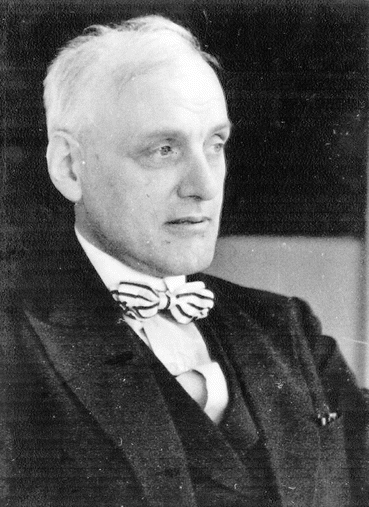(1)
Department of Plastic Surgery, University Hospital Leiden, Leiden, The Netherlands

The specialty of plastic and reconstructive surgery was officially recognised in Holland in 1950, the same year in which Dr. C.F. Koch, the doyen and the first post-war specialist in this branch of surgery, founded on his own initiative the Dutch Society of Plastic and Reconstructive Surgery. Charles Koch was already a busy general surgeon in Zeeland when the Wehrmacht invaded Holland, but he attached himself to a French battalion and managed to escape to England where he was persuaded by Archibald McIndoe to gain experience in plastic surgery. When Koch returned to Amsterdam after the Second World War, little was known in Holland of another Dutch pioneer in this branch of surgery, Johannes Esser, largely because he had spent most of his working life outside his native country.
In 1946, Johannes Fredericus Samuel Esser died a lonely death in Chicago, after a remarkable and fascinating life, highlighted by the development of many original principles and operation techniques in plastic surgery. Beyond the borders of his native country, he had enjoyed an international reputation for 30 years yet even now his name is not as well known as it deserves to be.
Jan Esser was descended from an old military family who came from the Dutch university town of Leiden. His great-grandfather was a professional soldier who abandoned his wife and children, one of whom, Martinus, Esser’s grandfather, followed in his father’s footsteps. Revolted by the bloody battle scenes he witnessed in the Belgian War of Independence in 1831, he retired to civilian life and established one of the first life insurance companies. Martinus Esser had two sons. One embarked upon the study of medicine but died during a dreadful typhoid epidemic whilst still a student.
His other son was Jan Esser’s father. Even in those times, his lifestyle was far from conventional. He was not in the least interested in study and rapidly abandoned a flirtation with the law in order to pursue his principle interests amongst many of riding, music and art. His marriage with a ravishingly beautiful girl of French Huguenot descent who sold strawberries led to a rift with his strict father who refused to meet the girl or her family. Such a mesalliance in those days was no trifling matter!
In 1877, a son, Jan, was born to the couple one year after the birth of their daughter, Betsy. Jan’s upbringing was complicated and strongly influenced by three members of the family. His mother attended to religious instruction, his father to general knowledge, the appreciation of art and music and his grandfather attempted to set him on the right toad by imparting conventional wisdom to the young man. A sound basic knowledge of economy and business matters were instilled into Jan Esser at an early age, but his broad general development on the home front conflicted with school lessons, which he pursued only under duress.
An attack of acute rheumatism in his youth wrongly was at first thought to have damaged his health. He was sorely plagued by the odd behaviour of his father who lived in a workers’ quarter of the city where he attracted considerable adverse criticism by such eccentricities as leading his horse through his house over the marble floors, as this was the only manner whereby the stable could be reached.
When Esser was thirteen, his father died of a heart ailment, and this loss was speedily followed by that of his grandfather. His mother became introspective and depressive, and as she became more and more of a recluse, she was unable to care for her children.
Although still in his teens, the young Esser was already independent enough to successfully negotiate the sale of the family home and the purchase of a new property. This was the beginning of the considerable acumen he was to demonstrate in the business world. The budding businessman’s talents were far reaching for he soon distinguished himself as a chess player and in quick order defeated all the renowned players in Leiden. Together with a group of fellow students from the lyceum, he formed a new club, which rapidly achieved national recognition.
Deterioration in his mother’s health led to her being admitted to a hospital, and her children were then placed with foster families. Their normal schooling continued and in Esser’s case so successfully that he gained a place at Leiden, the oldest University in Holland to study medicine. Early on he developed a profound interest in anatomy which led to his assembling a remarkable collection of malformed skulls. However, he maintained his interest in chess, often playing in tournaments abroad, and wrote a column for a daily paper, which paid enough for him to complete his medical studies in comfort. During this period, he helped his sister, who had enrolled at the dental school, with her studies, but he was such a demanding taskmaster; she often dissolved into tears during her brother’s tutorials! Such was his industry that Esser also attended lectures at the dental school and somehow managed to complete the theoretical part of the course during his medical studies. He and his sister then moved to Utrecht where the practical course was given.
In 1903, he graduated in medicine from the University of Leiden and shortly thereafter was crowned Dutch National Chess Champion. For a brief period, he worked as a locum tenens in general practices in Holland before completing his doctoral thesis at Gent in an amazingly short time. He then set sail for South America as ship’s surgeon and during the voyage visited both Central and North America. The captain in whom Esser found a worthy chess opponent telegraphed ahead to the chess fraternity in Caracas that the Dutch champion was on board and a tournament was organised in which Esser took part on his arrival.
Stay updated, free articles. Join our Telegram channel

Full access? Get Clinical Tree








